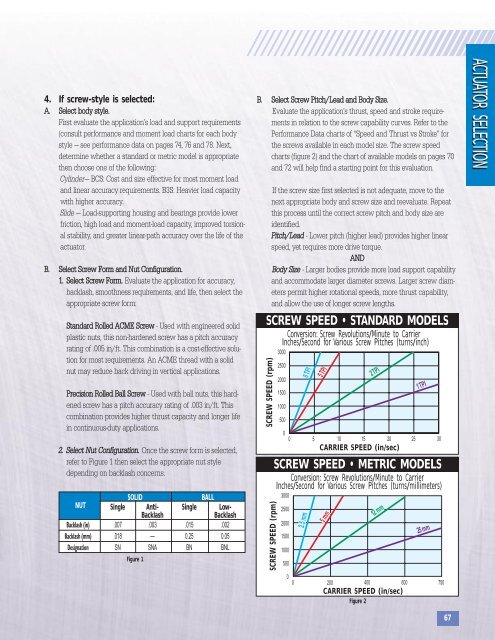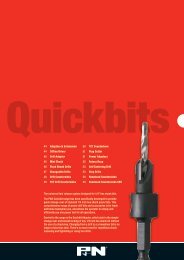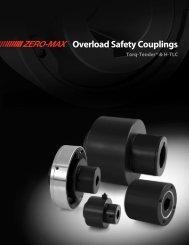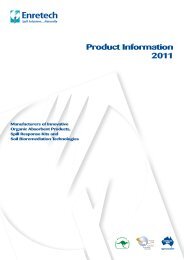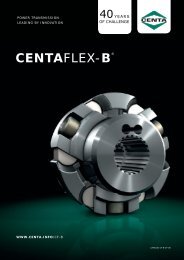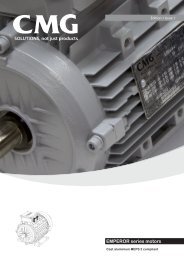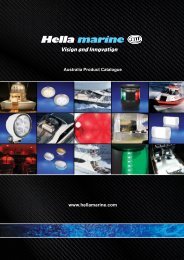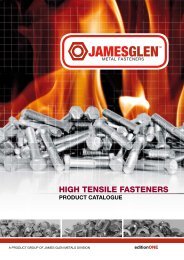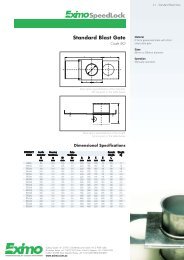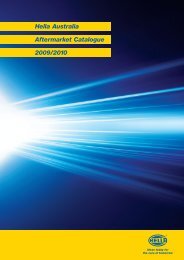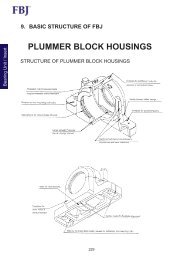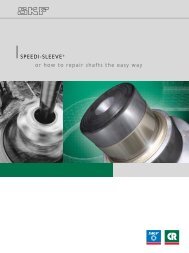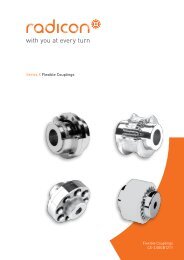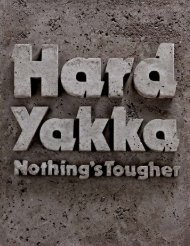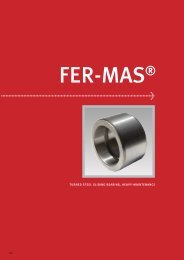Tol-O-Matic System Compatibility - Industrial and Bearing Supplies
Tol-O-Matic System Compatibility - Industrial and Bearing Supplies
Tol-O-Matic System Compatibility - Industrial and Bearing Supplies
You also want an ePaper? Increase the reach of your titles
YUMPU automatically turns print PDFs into web optimized ePapers that Google loves.
4. If screw-style is selected:<br />
A. Select body style.<br />
First evaluate the application’s load <strong>and</strong> support requirements<br />
(consult performance <strong>and</strong> moment load charts for each body<br />
style — see performance data on pages 74, 76 <strong>and</strong> 78. Next,<br />
determine whether a st<strong>and</strong>ard or metric model is appropriate<br />
then choose one of the following:<br />
Cylinder— BCS: Cost <strong>and</strong> size effective for most moment load<br />
<strong>and</strong> linear accuracy requirements. B3S: Heavier load capacity<br />
with higher accuracy.<br />
Slide — Load-supporting housing <strong>and</strong> bearings provide lower<br />
friction, high load <strong>and</strong> moment-load capacity, improved torsional<br />
stability, <strong>and</strong> greater linear-path accuracy over the life of the<br />
actuator.<br />
B. Select Screw Form <strong>and</strong> Nut Configuration.<br />
1. Select Screw Form. Evaluate the application for accuracy,<br />
backlash, smoothness requirements, <strong>and</strong> life, then select the<br />
appropriate screw form:<br />
St<strong>and</strong>ard Rolled ACME Screw - Used with engineered solid<br />
plastic nuts, this non-hardened screw has a pitch accuracy<br />
rating of .005 in/ft. This combination is a cost-effective solution<br />
for most requirements. An ACME thread with a solid<br />
nut may reduce back driving in vertical applications.<br />
Precision Rolled Ball Screw - Used with ball nuts, this hardened<br />
screw has a pitch accuracy rating of .003 in/ft. This<br />
combination provides higher thrust capacity <strong>and</strong> longer life<br />
in continuous-duty applications.<br />
2. Select Nut Configuration. Once the screw form is selected,<br />
refer to Figure 1 then select the appropriate nut style<br />
depending on backlash concerns.<br />
SOLID<br />
BALL<br />
NUT Single Anti- Single Low-<br />
Backlash<br />
Backlash<br />
Backlash (in) .007 .003 .015 .002<br />
Backlash (mm) .018 — 0.25 0.05<br />
Designation SN SNA BN BNL<br />
Figure 1<br />
B. Select Screw Pitch/Lead <strong>and</strong> Body Size.<br />
Evaluate the application’s thrust, speed <strong>and</strong> stroke requirements<br />
in relation to the screw capability curves. Refer to the<br />
Performance Data charts of “Speed <strong>and</strong> Thrust vs Stroke” for<br />
the screws available in each model size. The screw speed<br />
charts (figure 2) <strong>and</strong> the chart of available models on pages 70<br />
<strong>and</strong> 72 will help find a starting point for this evaluation.<br />
SCREW SPEED (rpm)<br />
If the screw size first selected is not adequate, move to the<br />
next appropriate body <strong>and</strong> screw size <strong>and</strong> reevaluate. Repeat<br />
this process until the correct screw pitch <strong>and</strong> body size are<br />
identified.<br />
Pitch/Lead - Lower pitch (higher lead) provides higher linear<br />
speed, yet requires more drive torque.<br />
AND<br />
Body Size - Larger bodies provide more load support capability<br />
<strong>and</strong> accommodate larger diameter screws. Larger screw diameters<br />
permit higher rotational speeds, more thrust capability,<br />
<strong>and</strong> allow the use of longer screw lengths.<br />
SCREW SPEED • STANDARD MODELS<br />
SCREW SPEED (rpm)<br />
Conversion: Screw Revolutions/Minute to Carrier<br />
Inches/Second for Various Screw Pitches (turns/inch)<br />
3000<br />
2500<br />
2000<br />
1500<br />
1000<br />
500<br />
Conversion: Screw Revolutions/Minute to Carrier<br />
Inches/Second for Various Screw Pitches (turns/millimeters)<br />
3000<br />
2500<br />
2000<br />
1500<br />
1000<br />
500<br />
8 TPI<br />
2.5 mm<br />
5 TPI<br />
5 mm<br />
2 TPI<br />
12 mm<br />
1 TPI<br />
0<br />
0 5 10 15 20 25 30<br />
CARRIER SPEED (in/sec)<br />
SCREW SPEED • METRIC MODELS<br />
25 mm<br />
0<br />
0 200 400 600 750<br />
CARRIER SPEED (in/sec)<br />
Figure 2<br />
ACTUATOR SELECTION<br />
67


